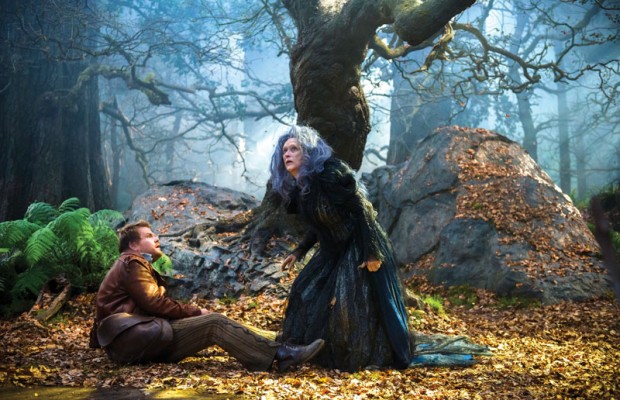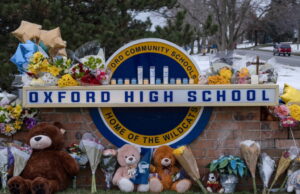Review: “Into the Woods” is a welcome twist on Disney tales

Rob Marshall’s “Into the Woods” is a musical turned movie that combines the fairy tales of Cinderella, Little Red Riding Hood, Jack and the Beanstalk, Rapunzel, and an original tale of a Baker and his wife who wish to have a child. However, what makes this movie different from other Disney fairy tale adaptations is that it is based on the original stories written by the Grimm brothers.
The film follows the tales of these six stories as they intertwine. The Baker (James Corden) and his wife (Emily Blunt) are approached by a Witch (Meryl Streep) who informs them that they will not be able to have a child unless she lifts a spell that she placed upon the Baker’s father many years ago for stealing magic beans from her garden. The father is told by the Witch that he must give her his first born child, and that his family tree will be barren, which is why the Baker cannot have a child. The Witch offers to lift the curse on the blue moon, which occurs every hundred years, but only if the Baker can obtain for her four magical items: a cape as red as blood, a cow as white as milk, hair as yellow as corn, and a shoe as pure as gold. Along the way, the Baker and his wife meet the other characters, drawing all of them into the adventure. As the characters are faced with challenges and tragedies, they learn that they must work together in order to succeed.
Marshall’s movie clearly reflected the style of Andrew Lloyd Webber, in replacing almost all dialogue with singing banter between the characters. This style is not often seen in the movies, but Marshall succeeded in creating the proper balance. In a complicated and winding plot line that follows five different storylines, it can be easy to lose track of the main conflict. Most of the time, Marshall was able to keep the plotline clean and easy to follow. However, at some points, I found myself wondering how the movie had gotten to a certain scene.
The film used a lighting style that is not seen very frequently. Instead of relying on a dark filter or little lighting to create the effect of a dark environment as most movies do, the lights were kept as an almost blue tint, creating a more fantasy-like appearance for the film. Since the characters could be seen through the lighting, the complicated plotline was slightly easier to follow.
The actors had amazing voices that fit their parts well. In particular, the voices of Anna Kendrick (Cinderella) and Meryl Streep (the Witch) carried well in their roles, and Johnny Depp (the Wolf) delivered a dynamic performance that served as a welcome contrast to the otherwise static numbers. The scene containing the most movement was a very unimportant one with the Princes bragging back and forth; this motion was not seen in the more important scenes, such as when the characters confront the Giant. The creative sets would have been great for more movement, and there was definitely room for improvement in that regard.
The movie’s special effects were hit and miss. In some scenes, such as when Cinderella gets her dress or the Beanstalk is growing, the special effects were very well done. In other places, however, the effects were far from convincing. The Giants, for instance, were created by enlarging the image of a human actor and using strange camera angles. The result was not pretty.
With remakes of real life Disney movies clogging the theatres, it was nice to have a fairy tale movie that wasn’t as clichéd. Instead of following the “happily ever after” plot, Marshall followed the Grimm Brothers’ stories, which are darker and more menacing, and besides several extremely cheesy scenes and themes, this movie fit well to this style.
While “Into the Woods” had some very blatant hiccups, the overall story was very well done and conveyed the important moral that where you can’t succeed on your own, teamwork is essential.
Rating: 7/10



